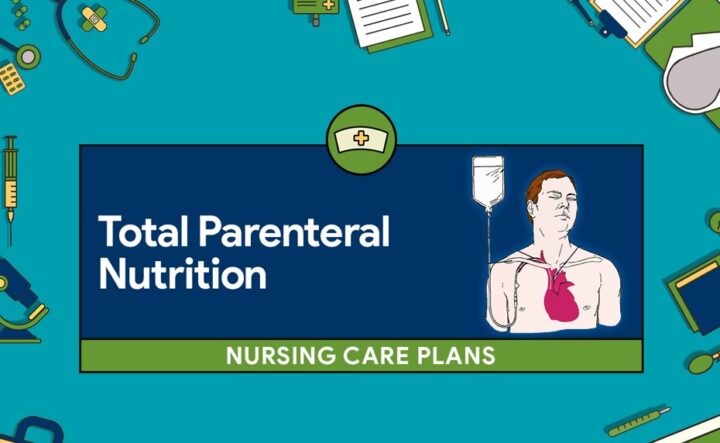A Through Approach to Malnutrition Treatment

Although the term “malnutrition” can technically be applied to cases of both over nutrition and undernutrition, the vast majority of cases fall into the latter category. There are a lot of misconceptions about malnutrition, which has led to cases going undiagnosed not just at home but also in healthcare facilities. This article will focus on how hospitals providing inpatient care can start to change the narrative and provide a more thorough approach to malnutrition treatment.
What Is Malnutrition?

Malnutrition can refer to both acute and chronic conditions. It can occur not just as a result of under eating, but also when patients suffer from conditions that prevent the absorption of key nutrients, or when those nutrients simply aren’t provided by their diets either in the hospital or at home. Malnutrition caused by nutrient deficiencies is sometimes referred to as “hidden hunger” because it does not typically present obvious physical symptoms. Learn more about how to support a nutrient-rich diet can alleviate or prevent malnutrition at morrisonhealthcare.com.
Identifying Chronic Malnutrition at Home
The first step towards creating an effective treatment protocol for malnutrition is to teach staff and patients how to recognize its symptoms. Because chronic malnutrition can set in gradually, it is often difficult to spot the warning signs in its early stages. Common symptoms include:
- Unplanned weight loss
- Loss of appetite
- Lack of interest in food
- Low energy levels
- Reduced muscle strength
- Mood changes
- Poor concentration
- Dizziness
- Difficulty keeping warm
- Reduced ability to perform activities of daily living
- Increased infection risk
- Poor wound healing
- Poor growth in children
Educating patients about these signs and symptoms can make it easier to identify malnutrition in its earlier stages. Only a doctor can diagnose malnutrition, but the patients themselves can learn about when they should be concerned. Those who are diagnosed with chronic malnutrition can then be treated in an outpatient setting and have a note added to their chart so that they receive appropriate inpatient care when hospitalized.
Screening for Malnutrition in Hospital Settings

Most healthcare facilities do not currently screen patients for malnutrition upon admission, but that is starting to change. Individual hospitals have begun implementing effective protocols for voluntary malnutrition screening. Thankfully, there are many tools designed for use in hospital settings that can make it easier to complete malnutrition screenings.
Part of the reason that malnutrition goes undiagnosed so often is that healthcare professionals are rarely taught how to perform screenings. Providing a training seminar for nurses and other professionals responsible for patient intake procedures is a good way to change that. Ideally, these seminars will be led by a team of clinicians and dieticians.
Patients that are determined to be at high risk of malnutrition during screenings may need to undergo blood tests to identify specific nutrient deficiencies. The information obtained from these tests can be helpful to healthcare teams tasked with creating personalized diets to address malnutrition both in the hospital and at home.
Finding Appropriate Treatment Options
There are several ways to treat malnutrition in an inpatient setting such as a hospital. Finding the right solution requires careful evaluation of the patient’s current nutritional status, underlying conditions, overall health, and personal preferences. Malnutrition treatment options for inpatient settings can include:
Specialized Diets
In some hospitals, nutritionists can prescribe specialized diets that incorporate foods known to promote healthy weight gain. These diets typically contain foods that are high in calories, include healthy fats and protein, and represent all the food groups for balanced nutrition. It’s important to note here that healthy weight gain isn’t just about consuming more calories. The quality of those calories is also important.
Extra Snacks
Undernourished hospital patients often have low appetites, which can make it difficult to consume sufficient amounts of calories during meals alone. Hospitals should have healthy snacks like Carnivore Snax on hand to give patients throughout the day.
This can make it easier to promote weight gain and reduce problems with malnutrition
Oral Nutritional Supplements

Oral nutritional supplements are rich in calories, protein, vitamins, and minerals. They aren’t designed to be used as meal replacements. Rather, they should be consumed alongside meals and healthy snacks to give patients an extra nutrition boost. Some oral nutritional supplements are available over the counter in grocery stores and pharmacies, while others must be prescribed by a doctor or registered dietician. Hospital staff should consult with the patients’ nutritionists before administering oral nutritional supplements.
Enteral Feeding
Enteral feeding, sometimes referred to colloquially as tube feeding, is typically used only in extreme situations or when patients are unable to consume food or nutritional supplements by mouth. There are three common types of enteral feeding tubes. They include:
- Nasogastric tubes, which enter the stomach through the nose
- Nasojejunal tubes, which extend further into the digestive tract
- Percutaneous endoscopic gastrostomy (PEG) tubes, which are placed directly into a patient’s stomach via the abdomen
The type of enteral feeding tube chosen will depend on a patient’s diagnosis and symptoms as well as their personal preference. Including patients in conversations about feeding tube placement is vital.
Total Parenteral Nutrition

Total parenteral nutrition (TPN) is a feeding method that bypasses the GI tract entirely. Instead, it introduces the nutrients patients need directly into their veins. This method is used almost exclusively when a patient can’t or shouldn’t receive food or fluids by mouth or via a feeding tube. The length of time a patient might need TPN will vary depending on the underlying condition causing malnutrition. In some cases, patients are sent home on TPN.
A Nutritious Diet Is Always the Best Option
Although there are many ways to introduce the nutrients a patient needs to combat malnutrition into their body, experts agree that promoting healthy eating is always the best first defense. Consulting a nutritionist and a dietician is a must, as each patient’s dietary needs will differ. While in the hospital, specialized diets can be ordered and snacks are kept on hand for undernourished patients, but people struggling to maintain adequate nutrition should also be educated about how to continue their high-calorie diets at home.
